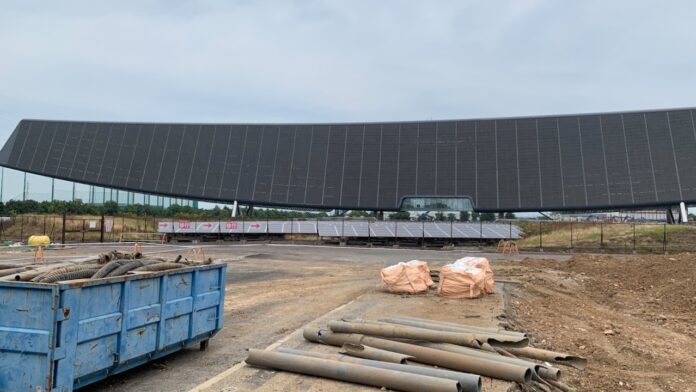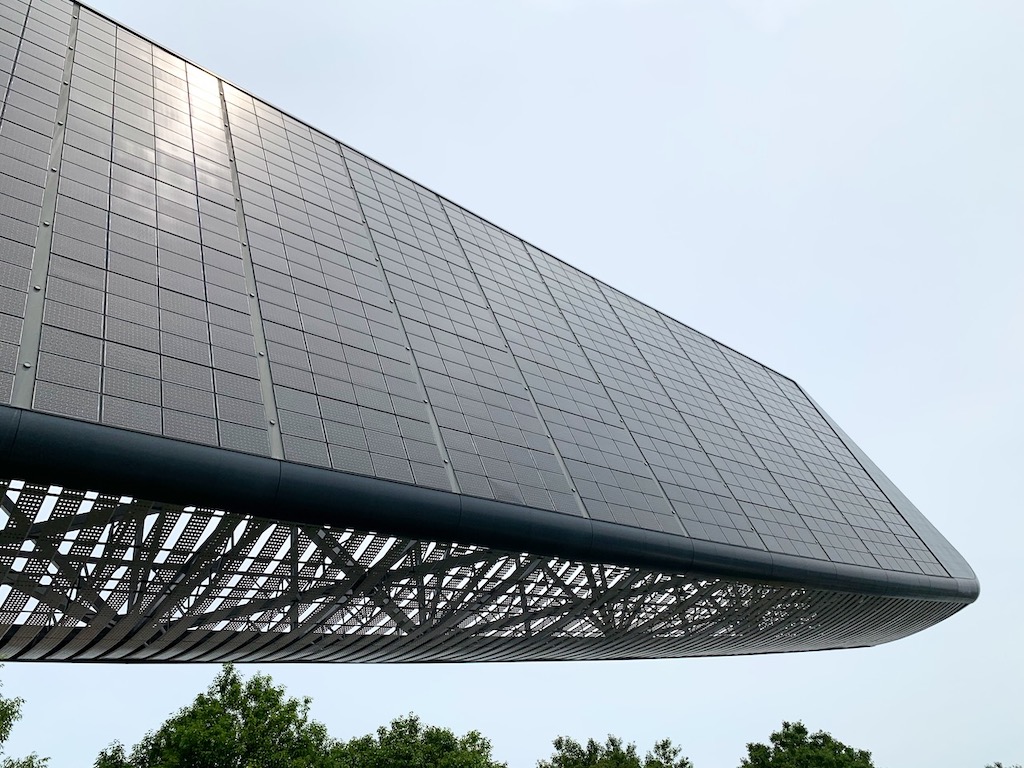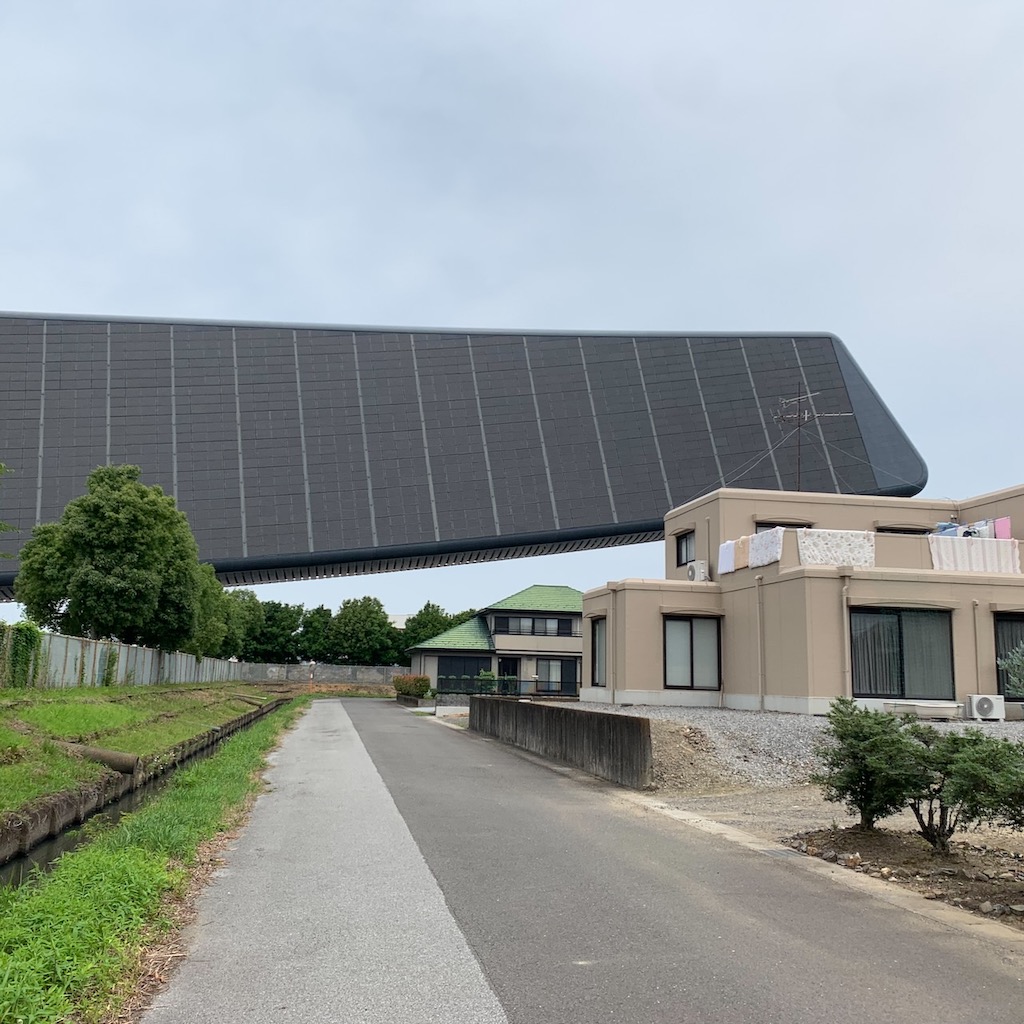
Gawkers have just two more months for a last chance to see the Panasonic Solar Arc, a huge imposing black structure in Anpachi-cho, in western Gifu Prefecture. The imposing and ominous looking black structure caused a lot of curious looks of Shinkansen Express train passengers passing through nearby Hashima Station during its 21-year history. Its unfamiliar shape caused few to know that its purpose was to power the neighboring residential area with electricity.
Panasonic Holdings sold the land to an Osaka-based real estate development company in Dec., 2022. The property developer then said it would share the decision to keep or take down the Solar Arc with nearby residents in January. In March the developer announced that keeping the Solar Arc would make the property unprofitable. The Solar Arc’s demolition is scheduled to be completed in Dec., 2023.
Intended to Promote Solar Power Use
The now defunct Sanyo Electric Corp. originally built the Solar Arc on its semiconductor factory site in Anpachi-cho, 35 km northwest of Nagoya City. At the time, the company said it built the structure to promote solar electric generation and concern for the environment. Kajima Design Nagoya, a branch office of the large construction business Kajima, designed the wing shaped structure in 2002. The huge steel structure was basically designed to hold solar panels in its spanning frame and also host a small visitor center at its base in its lower center.

Panasonic Solar Arc viewed from below
Kajima finished construction of the Solar Arc in 2003. The Japanese architecture magazine Architectural Metalwork Association featured the Solar Arc in its November 2003 edition as its lead story. The magazine described the Solar Arc’s design as unique since it calls for its four steel posts to support a structure 315 meters (1033 feet) across with a weight of 3,000 tons. Despite its eye catching and imposing appearance, an infrequent passerby from a distance would have trouble understanding what they were looking at unless they could associate the original red Sanyo logo to one’s own knowledge of Sanyo’s business history.
A Dimming Star
Sanyo Electric gained world fame for its breakthrough silicon technology, and was known as a leader in solar cell technology in the 1970s and 1980s. It introduced the world’s first calculator with built-in amorphous silicon solar cells which could power the device in almost all but completely dark situations. The company promoted the Solar Arc as capable of producing 530,000 kilowatt-hours per year.
Sanyo experienced difficulty extending its world leading position and technology to succeed in producing large size solar panels. Internet rumors abound, such as here and here, with Sanyo’s past troubles to deliver solar panels that met initially promised efficiency specifications, and that the Solar Arc was just the company’s way of dealing with a large amount of undeliverable solar panels. That said, the same rumors suggest the panels did produce enough electricity to power 10,000 residences nearby. The Solar Arc stopped providing electricity in 2011 when Sanyo Electric sold the structure and property to Panasonic.
A currently designed and operating wind turbine produces the same projected annual energy production of the Solar Arc at just one tenth its size.
Sanyo Electric, despite holding lucrative solar cell technology patents, fell into financial trouble in 2009. Sanyo Electric closed its semiconductor factory behind the Solar Arc in 2010 and the land and the Solar Arc sat idle since. The company eventually sold itself to the Panasonic Group in 2011. Panasonic replaced the original logo that year with its own blue logo.

The property developer that acquired the former Panasonic site said in January, 2023, that the decision to keep or dismantle the Solar Arc would be shared with neighbors.
The property developer has yet to announce its plans for the site.
